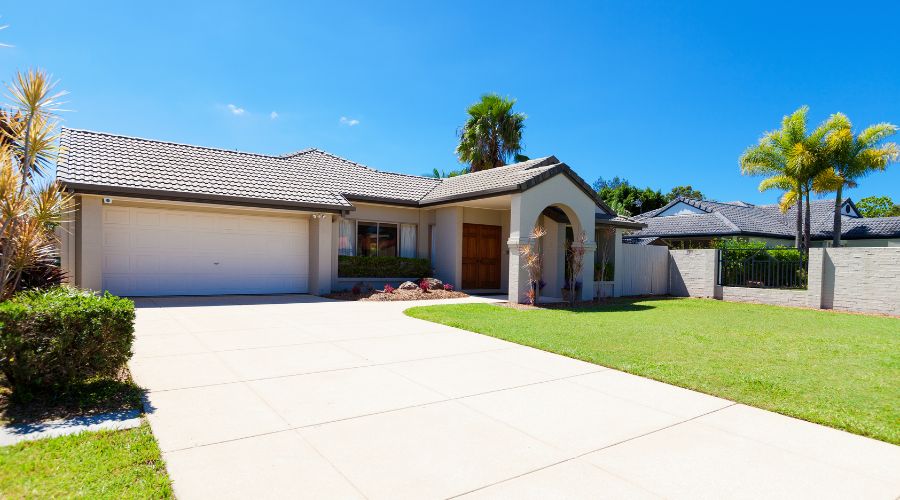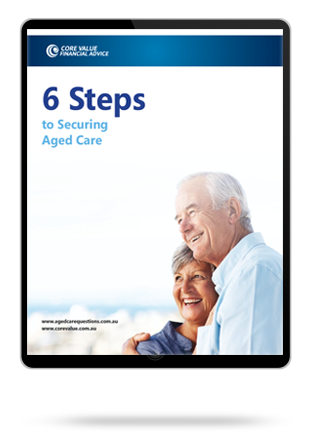When calculating fees for aged care, it’s important to understand whether or not the family home is counted as an asset for Aged Care fee assessment purposes.
In some cases it is and in some it isn’t. In fact, when moving into care, assessment of the home should also be considered for Centrelink Age Pension purposes.
Knowing how the family home is assessed for both Aged Care and Age Pension purposes when moving into a residential Aged Care facility allows you to structure your assets in a way that can maximise Age Pension entitlements and minimise Aged Care.
Getting this right can mean thousands of dollars each year in reduced fees and increased entitlements.
This article covers:
- When the family home is and is not assessed for Aged Care purposes;
- When the family home is and is not assessed for Centrelink Age Pension purposes; and
- How much of the former home value is assessed in each instance; and
- How any rent received on the former home is assessed.
In This Article
Family Home & The Aged Care Asset Assessment
There are a number of fees associated with Aged Care. Namely:
- Refundable Accommodation Deposit (RAD)
- Daily Accommodation Payment (DAP)
- Basic Daily Care fee
- Means-Tested Care fee
- Additional Services fee
When we talk about the family home counted as an asset for aged care, we are talking solely about Means-Tested Care fee assessment. The Means-Tested Care fee is a hybrid of both an assets test and income test.
The RAD/DAP amount is set by the Aged Care home, as is the Additional Services Fee, and the Basic Daily Care fee is a flat fee that everyone pays. The Means Tested Fee on the other hand is the only fee that is calculated based on your level of income and assets – including (or not including) your family home.
Related Article: How to Not Pay a Nursing Home Bond
Is the Family Home Counted as an Asset for Aged Care?
The family home is not counted as an asset for Aged Care if a protected person continues to live in your home after you move into residential care. If a protected person does not continue to live in your home, then the family home will be counted as an asset for Aged Care.
When is the Family Home Not Counted as an Asset for Aged Care?
The family home is not counted as an asset for Aged Care assessment purposes if a certain person (known as a protected person) will continue to live in the home after you move into residential Aged Care.
A protected person includes:
- Your partner;
- A dependant child;
- A relative who is eligible for an Australian income support payment that has been living in the home for at least 5 years; or
- A carer who is eligible for an Australian income support payment and has been living in the home for at least 2 years.
If any of these people will continue to live in your family home after you move into residential Aged Care, then your home will not be assessed for Aged Care assessment purposes for as long as such a person lives in the home and continues to receive an income support payment, where relevant.
Related Article: How to Avoid Selling a Home to Pay for Care in Australia
When is the Family Home Counted as an Asset for Aged Care?
A family home is counted as an asset for Aged Care purposes if no protected person lives in your home once you move into care.
Even if you did have a protected person live in your home and your family home wasn’t assessed, it will become assessed if any of the following occurs:
- You sell your family home;
- The protected person moves out of your home;
- The relative or carer who was a protected person stops receiving income support payments from the Australian government.
However, even if the family home is counted as an asset for Aged Care, it is not the total value of the home that will be assessed.
Related Articles: How to Protect Assets from Nursing Home Costs
How Much of the Family Home is Counted as an Asset for Aged Care?
The value of the family home that will be counted as an asset for aged care is $193,219.20 from 1 July 2023 if no protected person lives in the home. This is known as the Home Exemption Cap and it applies separately to both members of a couple.
If a protected person does live in the former home, the amount counted as an asset will be $0. That is, the full value of the home will not be assessed for Aged Care purposes.
Is Rent from the Family Home Assessed for Aged Care?
Rent paid by a family member, relative or any other person will be fully assessed for Aged Care Means Tested Care fee purposes. There is no exemption for rent paid to an Aged Care resident, regardless of who is paying the rent.
Now that we’ve covered how the family home is counted as an asset for Aged Care purposes, let’s see how it is assessed for Centrelink Age Pension purposes.
Related Articles: How To Reduce Assets for Aged Care Assessment
Is the Family Home Counted as an Asset for Age Pension?
The family home is not counted as an asset for Age Pension purposes for the first two years after moving into residential aged care. There is no requirement for a protected person to live in the former home, nor have the home rented. A blanket rules applies that the former home will be exempt from Age Pension assessment for 2 years.
If, after two years, an aged care resident continues to reside in aged care and has not moved back into their home, the home will be treated as a full assessable asset.
Read more: Family Home Exemption Aged Care
Former Home: Homeowner or Non-Homeowner?
After moving into Aged Care, a resident will be treated as a homeowner for Centrelink Age Pension purposes if they still own their family home. However, they will convert from a homeowner into a non-homeowner at the earlier of:
- The home being sold; and
- The two-year anniversary after moving into residential Aged Care.
Read More Here: Aged Care and Principal Home Exemption
How Much of the Family Home is Counted as an Asset for Age Pension?
Unlike Aged Care assessment which limits the value of the home that is counted for Means Tested Care fee purposes to the Home Exemption Cap of $193,219.20, there is no limit on how much of the home is assessed for Centrelink Age Pension purposes.
Unless the home is exempt from Age Pension assessment, the total market value of the home will be counted under the Centrelink Assets Test. Additionally, an rental income derived from the family home will also be assessed under the Centrelink Income Test.
As you can see, there are a number of things to consider with regards to the family home when moving into Aged Care. Retaining and selling the home needs to be compared to determine the best outcome, while ensuring Aged Care costs can continue to be met.
At CoreValue we will help you navigate the complexities of aged care and find the best financial solutions for your family. If you have any questions or concerns regarding your situation, please call us on 1300 944 011 to speak to an expert aged care adviser.
Articles You Might Also Like:
- What Is a Protected Person For Aged Care & Who Qualifies?
- Aged Care Financial Planning Strategies
- Renting Home To Pay for Aged Care
- Do I Have To Sell My Home for Aged Care?

Hi, I hope you found this article useful.
If you wish to discuss your situation and what strategies may be of benefit please contact us here
Thanks - Shane


